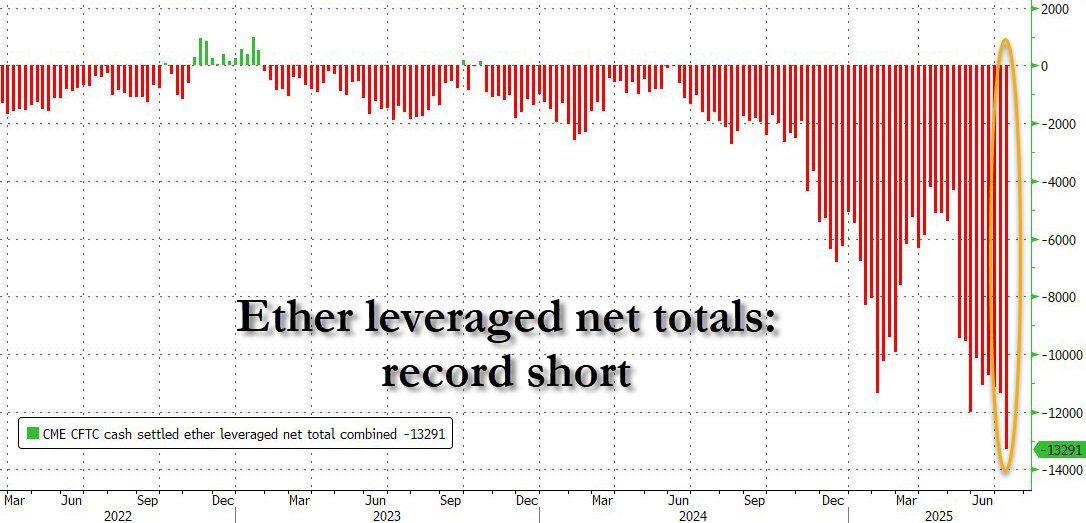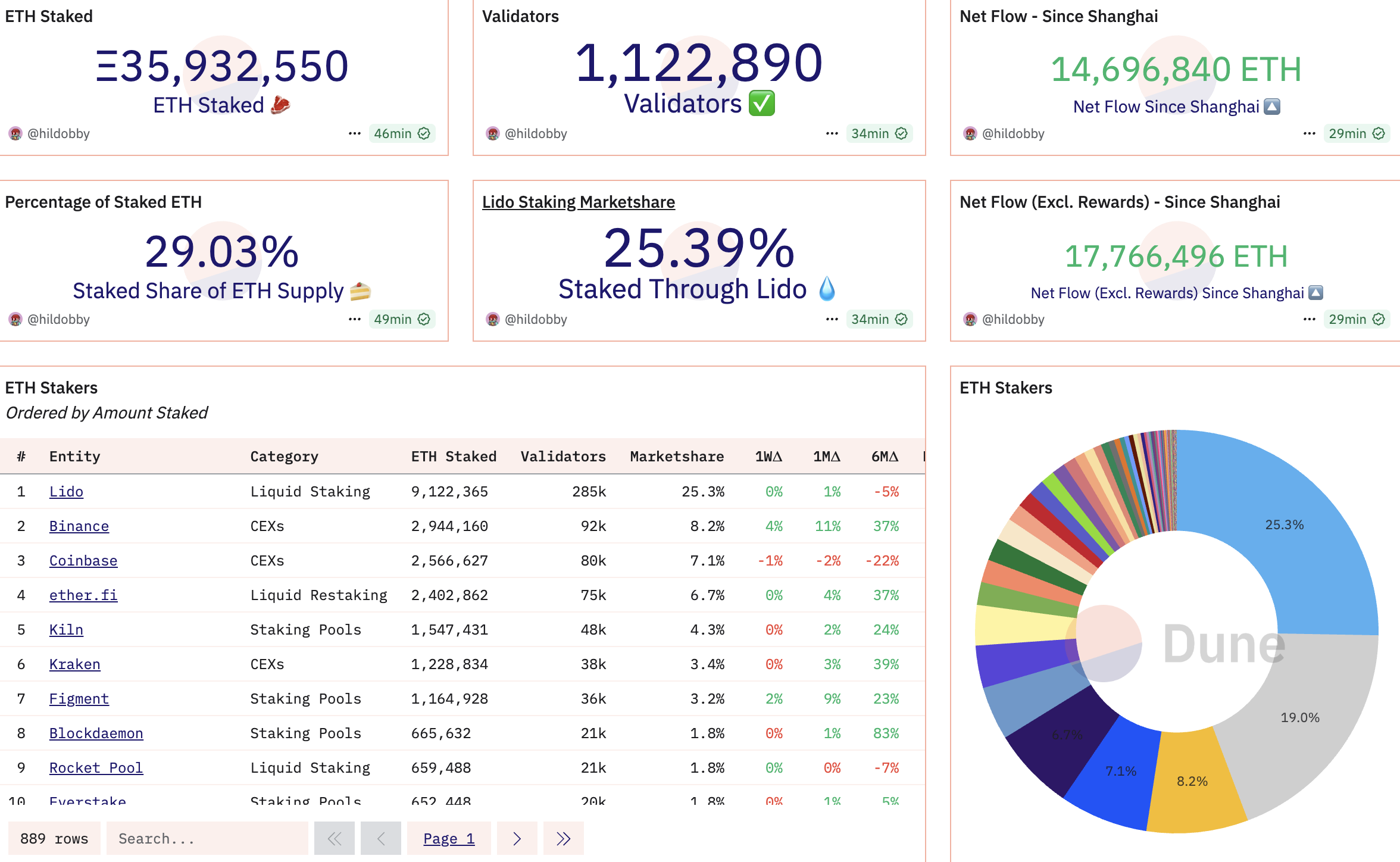| COINOTAG recommends • Exchange signup |
| 💹 Trade with pro tools |
| Fast execution, robust charts, clean risk controls. |
| 👉 Open account → |
| COINOTAG recommends • Exchange signup |
| 🚀 Smooth orders, clear control |
| Advanced order types and market depth in one view. |
| 👉 Create account → |
| COINOTAG recommends • Exchange signup |
| 📈 Clarity in volatile markets |
| Plan entries & exits, manage positions with discipline. |
| 👉 Sign up → |
| COINOTAG recommends • Exchange signup |
| ⚡ Speed, depth, reliability |
| Execute confidently when timing matters. |
| 👉 Open account → |
| COINOTAG recommends • Exchange signup |
| 🧭 A focused workflow for traders |
| Alerts, watchlists, and a repeatable process. |
| 👉 Get started → |
| COINOTAG recommends • Exchange signup |
| ✅ Data‑driven decisions |
| Focus on process—not noise. |
| 👉 Sign up → |
-
Ethereum is experiencing a significant supply shock driven by record leveraged short positions and a historic surge in staking, which is drastically reducing its circulating supply.
-
Whale accumulation and substantial withdrawals from exchanges are tightening liquidity, increasing the likelihood of a short squeeze and a potential bullish breakout for ETH.
-
Despite the growing bullish momentum, hedge fund basis trades carry liquidation risks if market volatility mirrors the extreme conditions seen during 2020’s “Black Thursday.”
Ethereum faces a supply shock with record shorts and over 29% staked, tightening liquidity and raising short squeeze potential amid hedge fund risks.
Ethereum Supply Shock Intensifies Amid Record Leveraged Shorts and Staking Surge
Ethereum is currently at the center of a supply shock that is gaining substantial momentum. Data from ZeroHedge reveals that leveraged short positions on ETH have reached an unprecedented aggregate of -13,291 across OTC and cash contracts, marking the steepest decline since early 2025. This surge in shorting activity reflects aggressive positioning by hedge funds rather than bearish sentiment, as many are engaging in basis trading strategies to capitalize on price discrepancies between futures and spot markets.

According to crypto analyst Fejau, the dominant driver behind these shorts is a basis trade where funds short CME ETH futures while simultaneously buying ETH spot to earn staking yields. This delta-neutral approach currently offers an annualized return of approximately 13%, combining a 9.5% basis from futures and a 3.5% staking yield, making ETH more attractive than BTC for such strategies.
| COINOTAG recommends • Professional traders group |
| 💎 Join a professional trading community |
| Work with senior traders, research‑backed setups, and risk‑first frameworks. |
| 👉 Join the group → |
| COINOTAG recommends • Professional traders group |
| 📊 Transparent performance, real process |
| Spot strategies with documented months of triple‑digit runs during strong trends; futures plans use defined R:R and sizing. |
| 👉 Get access → |
| COINOTAG recommends • Professional traders group |
| 🧭 Research → Plan → Execute |
| Daily levels, watchlists, and post‑trade reviews to build consistency. |
| 👉 Join now → |
| COINOTAG recommends • Professional traders group |
| 🛡️ Risk comes first |
| Sizing methods, invalidation rules, and R‑multiples baked into every plan. |
| 👉 Start today → |
| COINOTAG recommends • Professional traders group |
| 🧠 Learn the “why” behind each trade |
| Live breakdowns, playbooks, and framework‑first education. |
| 👉 Join the group → |
| COINOTAG recommends • Professional traders group |
| 🚀 Insider • APEX • INNER CIRCLE |
| Choose the depth you need—tools, coaching, and member rooms. |
| 👉 Explore tiers → |
Compounding the supply shock is the historic rise in ETH staking. Dune Analytics reports that over 29.03% of Ethereum’s total supply is locked in staking contracts, effectively removing more than a quarter of ETH from active circulation. This leaves roughly 121 million ETH available in the market, tightening supply and potentially amplifying price volatility.

| COINOTAG recommends • Exchange signup |
| 📈 Clear interface, precise orders |
| Sharp entries & exits with actionable alerts. |
| 👉 Create free account → |
| COINOTAG recommends • Exchange signup |
| 🧠 Smarter tools. Better decisions. |
| Depth analytics and risk features in one view. |
| 👉 Sign up → |
| COINOTAG recommends • Exchange signup |
| 🎯 Take control of entries & exits |
| Set alerts, define stops, execute consistently. |
| 👉 Open account → |
| COINOTAG recommends • Exchange signup |
| 🛠️ From idea to execution |
| Turn setups into plans with practical order types. |
| 👉 Join now → |
| COINOTAG recommends • Exchange signup |
| 📋 Trade your plan |
| Watchlists and routing that support focus. |
| 👉 Get started → |
| COINOTAG recommends • Exchange signup |
| 📊 Precision without the noise |
| Data‑first workflows for active traders. |
| 👉 Sign up → |
Liquidity Tightening Through Whale Accumulation and Exchange Withdrawals
On-chain data indicates a marked decline in ETH liquidity on exchanges, driven by significant withdrawals and accumulation by whales and institutional players such as SharpLink. Last Friday alone, over 140,000 ETH—valued at approximately $393 million—were withdrawn from exchanges, marking the largest single-day outflow in over a month. This reduction in exchange reserves constrains available supply, increasing upward price pressure when demand intensifies.
Sentora, a market analyst, highlighted this trend, noting that these substantial outflows contribute to the tightening liquidity environment that could set the stage for a short squeeze. MerlijnTrader, a prominent crypto strategist, projects that these dynamics could propel ETH prices toward $10,000 within the current market cycle, especially with anticipated ETF staking approvals expected by year-end, which would further enhance staking incentives and reduce circulating supply.
| COINOTAG recommends • Traders club |
| ⚡ Futures with discipline |
| Defined R:R, pre‑set invalidation, execution checklists. |
| 👉 Join the club → |
| COINOTAG recommends • Traders club |
| 🎯 Spot strategies that compound |
| Momentum & accumulation frameworks managed with clear risk. |
| 👉 Get access → |
| COINOTAG recommends • Traders club |
| 🏛️ APEX tier for serious traders |
| Deep dives, analyst Q&A, and accountability sprints. |
| 👉 Explore APEX → |
| COINOTAG recommends • Traders club |
| 📈 Real‑time market structure |
| Key levels, liquidity zones, and actionable context. |
| 👉 Join now → |
| COINOTAG recommends • Traders club |
| 🔔 Smart alerts, not noise |
| Context‑rich notifications tied to plans and risk—never hype. |
| 👉 Get access → |
| COINOTAG recommends • Traders club |
| 🤝 Peer review & coaching |
| Hands‑on feedback that sharpens execution and risk control. |
| 👉 Join the club → |
Risks Surrounding Hedge Fund Basis Trades and Market Volatility
While the bullish narrative around Ethereum’s supply shock is compelling, it is not without risks. The basis trade strategy employed by hedge funds is sensitive to sudden spikes in volatility, reminiscent of the “Black Thursday” crash in 2020. Should a similar market disruption occur, these leveraged positions could face forced liquidations, triggering sharp price corrections and undermining market confidence.

Currently, ETH has reclaimed the $3,000 level but remains approximately 38% below its all-time high from November 2021. Investors and traders should remain vigilant as the interplay between supply constraints, leveraged shorts, and market volatility will likely dictate Ethereum’s near-term price trajectory.
Conclusion
Ethereum’s supply shock, driven by record leveraged shorts, historic staking levels, and significant exchange withdrawals, is creating a uniquely tight liquidity environment. This scenario increases the potential for a bullish short squeeze but also exposes hedge funds to liquidation risks if volatility surges. Market participants should closely monitor these dynamics to navigate the evolving landscape effectively and capitalize on emerging opportunities while managing downside risks.
| COINOTAG recommends • Exchange signup |
| 📈 Clear control for futures |
| Sizing, stops, and scenario planning tools. |
| 👉 Open futures account → |
| COINOTAG recommends • Exchange signup |
| 🧩 Structure your futures trades |
| Define entries & exits with advanced orders. |
| 👉 Sign up → |
| COINOTAG recommends • Exchange signup |
| 🛡️ Control volatility |
| Automate alerts and manage positions with discipline. |
| 👉 Get started → |
| COINOTAG recommends • Exchange signup |
| ⚙️ Execution you can rely on |
| Fast routing and meaningful depth insights. |
| 👉 Create account → |
| COINOTAG recommends • Exchange signup |
| 📒 Plan. Execute. Review. |
| Frameworks for consistent decision‑making. |
| 👉 Join now → |
| COINOTAG recommends • Exchange signup |
| 🧩 Choose clarity over complexity |
| Actionable, pro‑grade tools—no fluff. |
| 👉 Open account → |
| COINOTAG recommends • Members‑only research |
| 📌 Curated setups, clearly explained |
| Entry, invalidation, targets, and R:R defined before execution. |
| 👉 Get access → |
| COINOTAG recommends • Members‑only research |
| 🧠 Data‑led decision making |
| Technical + flow + context synthesized into actionable plans. |
| 👉 Join now → |
| COINOTAG recommends • Members‑only research |
| 🧱 Consistency over hype |
| Repeatable rules, realistic expectations, and a calmer mindset. |
| 👉 Get access → |
| COINOTAG recommends • Members‑only research |
| 🕒 Patience is an edge |
| Wait for confirmation and manage risk with checklists. |
| 👉 Join now → |
| COINOTAG recommends • Members‑only research |
| 💼 Professional mentorship |
| Guidance from seasoned traders and structured feedback loops. |
| 👉 Get access → |
| COINOTAG recommends • Members‑only research |
| 🧮 Track • Review • Improve |
| Documented PnL tracking and post‑mortems to accelerate learning. |
| 👉 Join now → |










